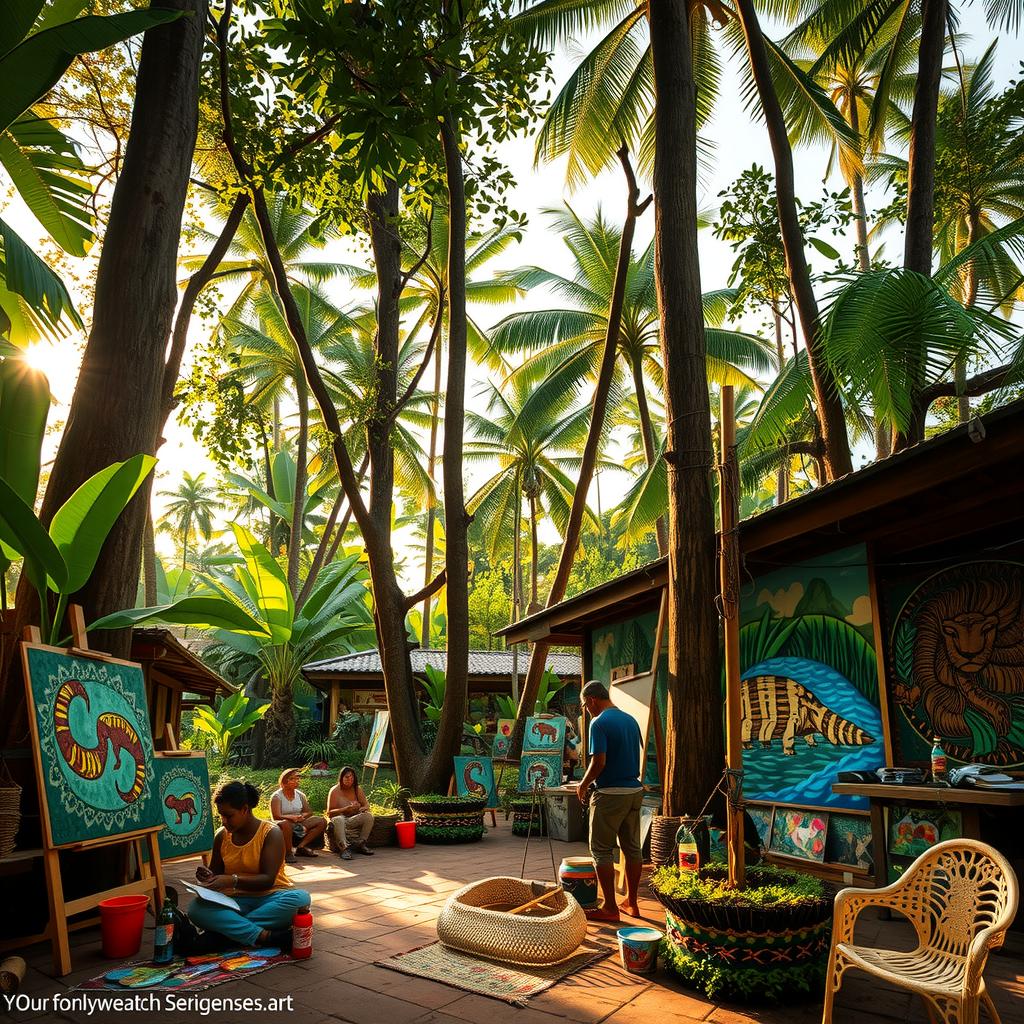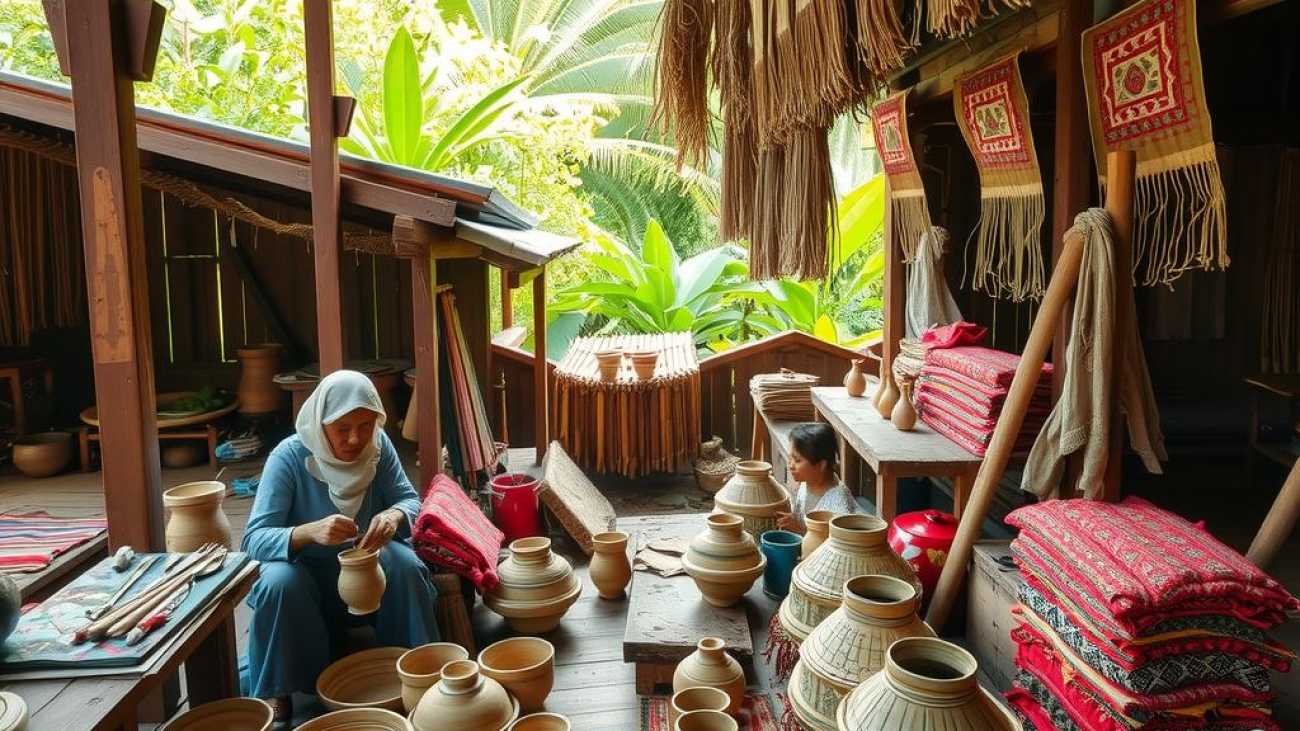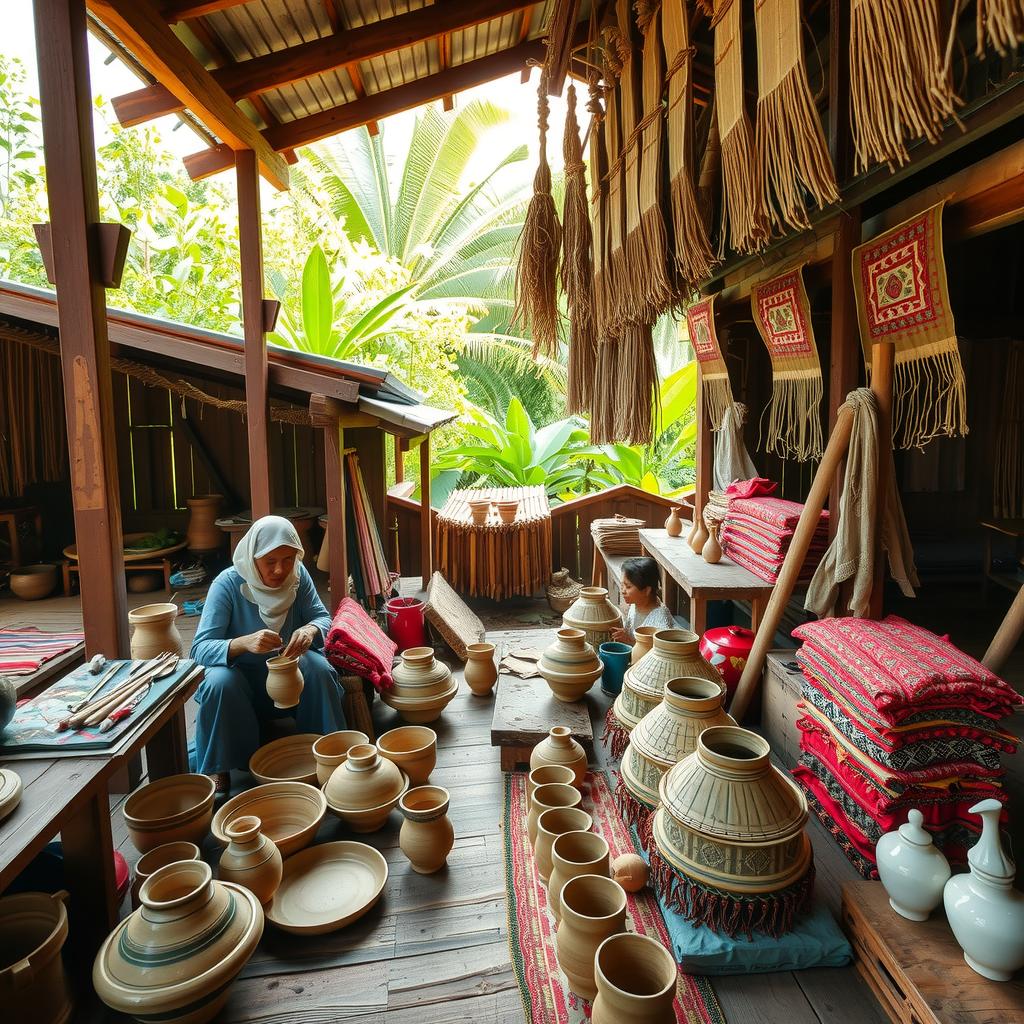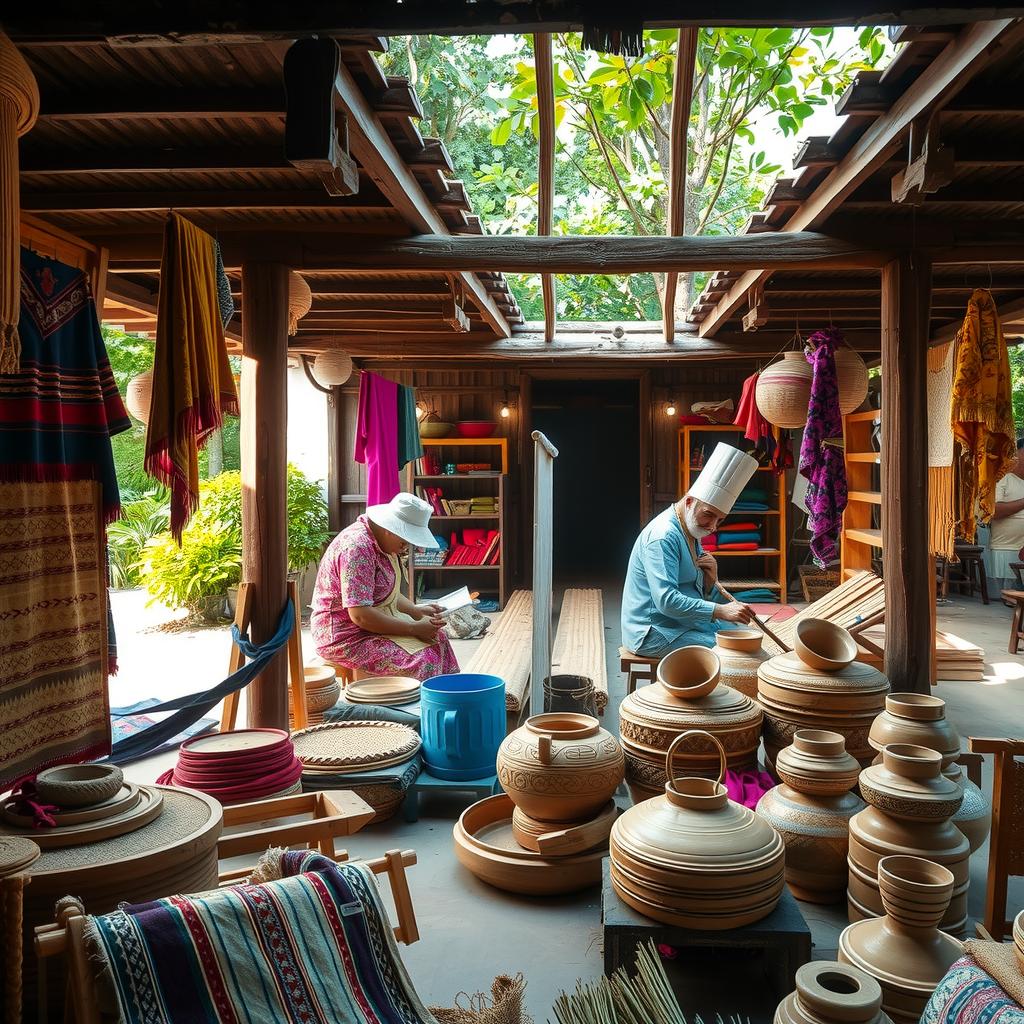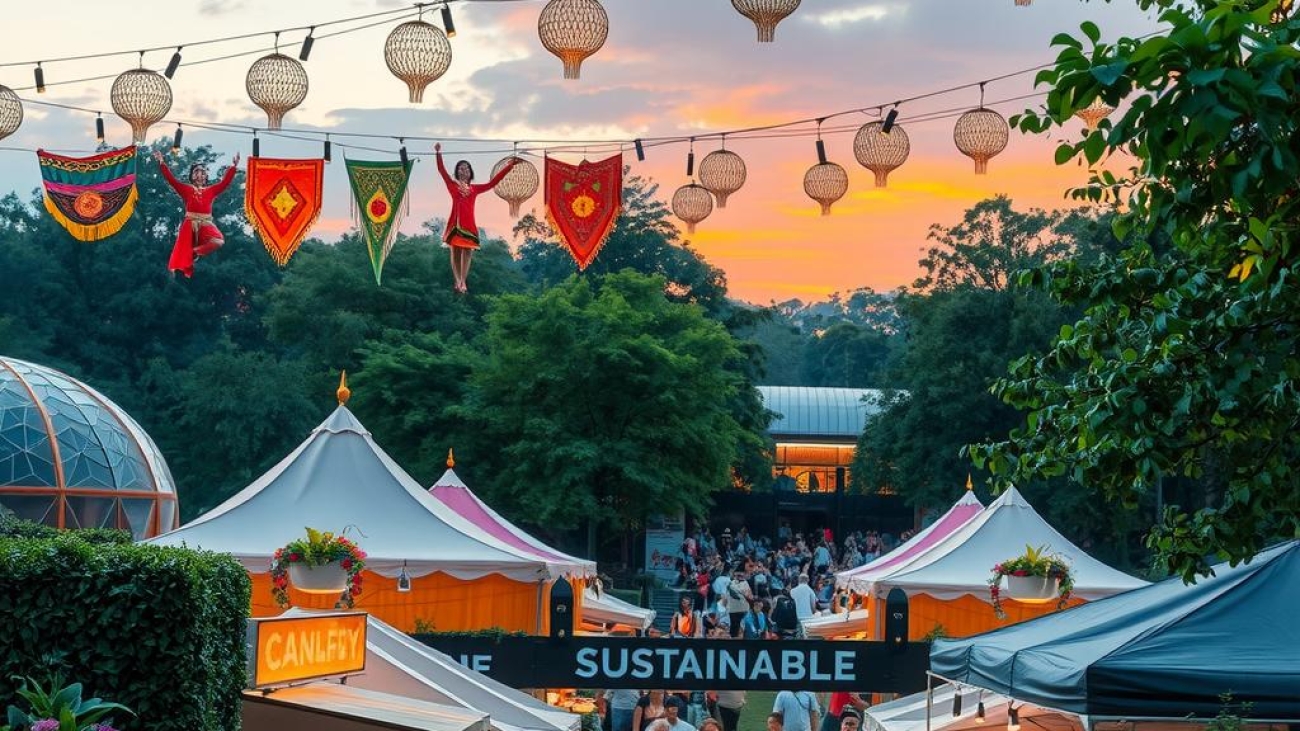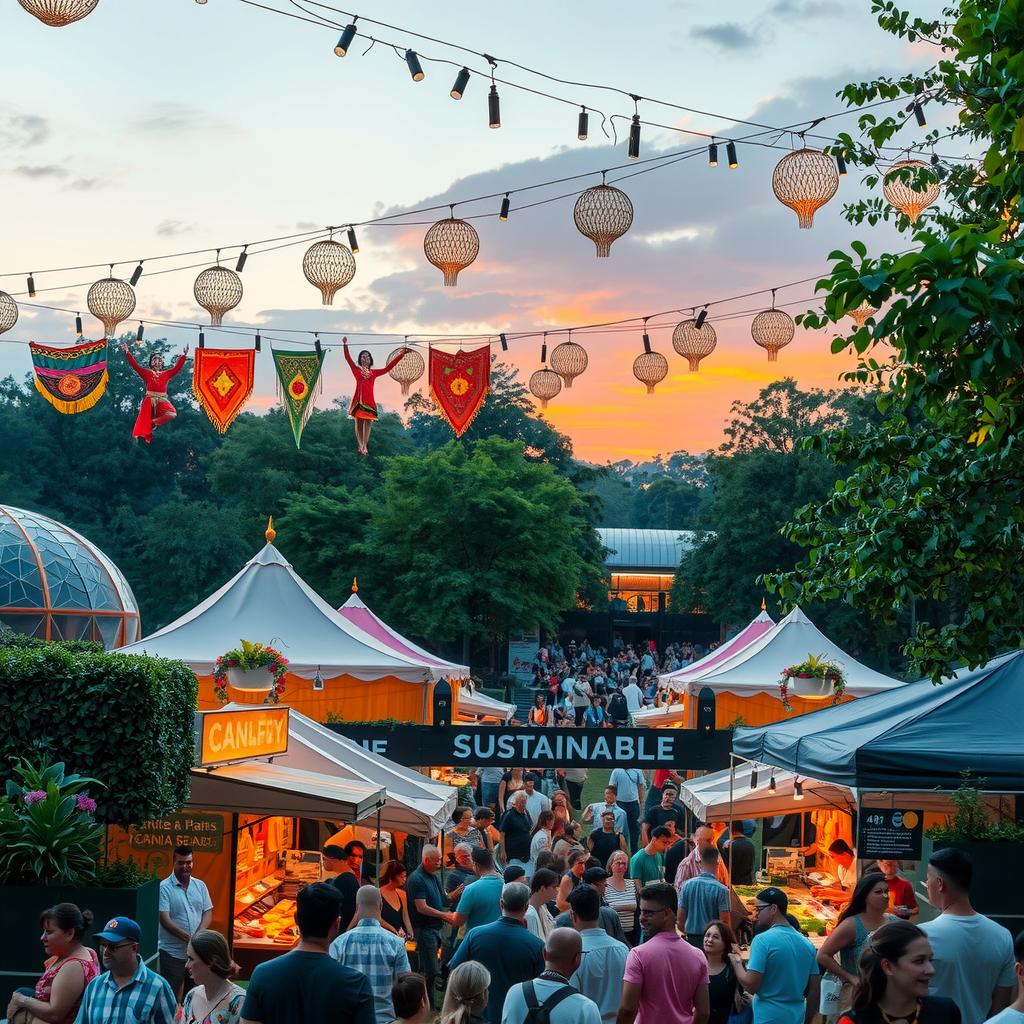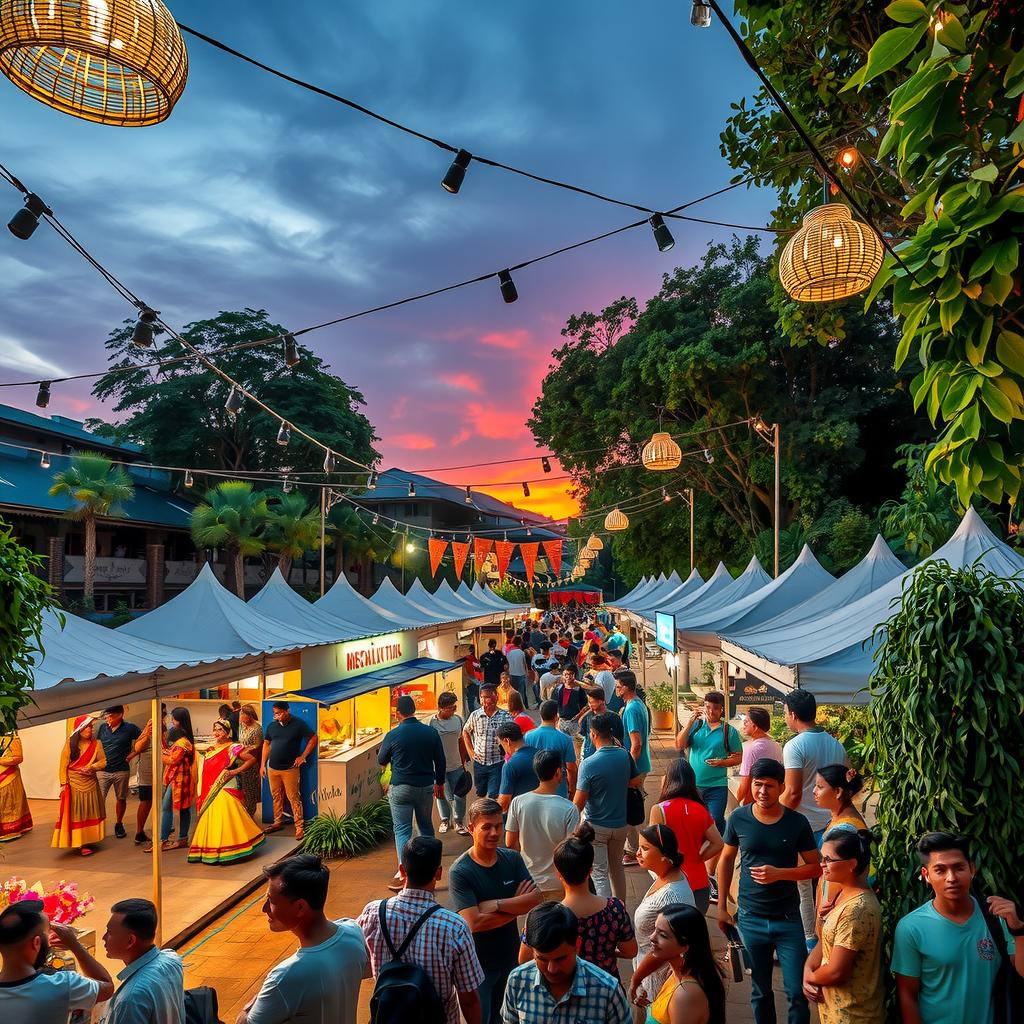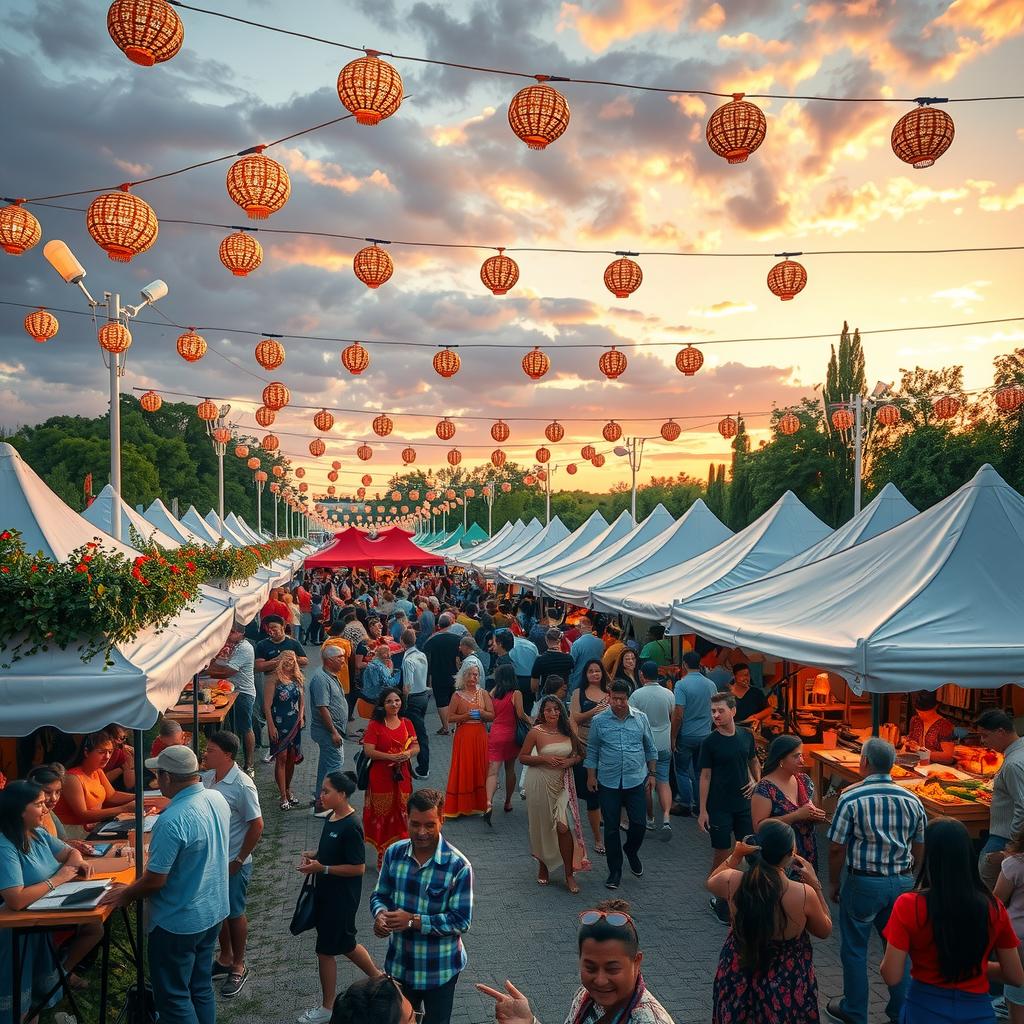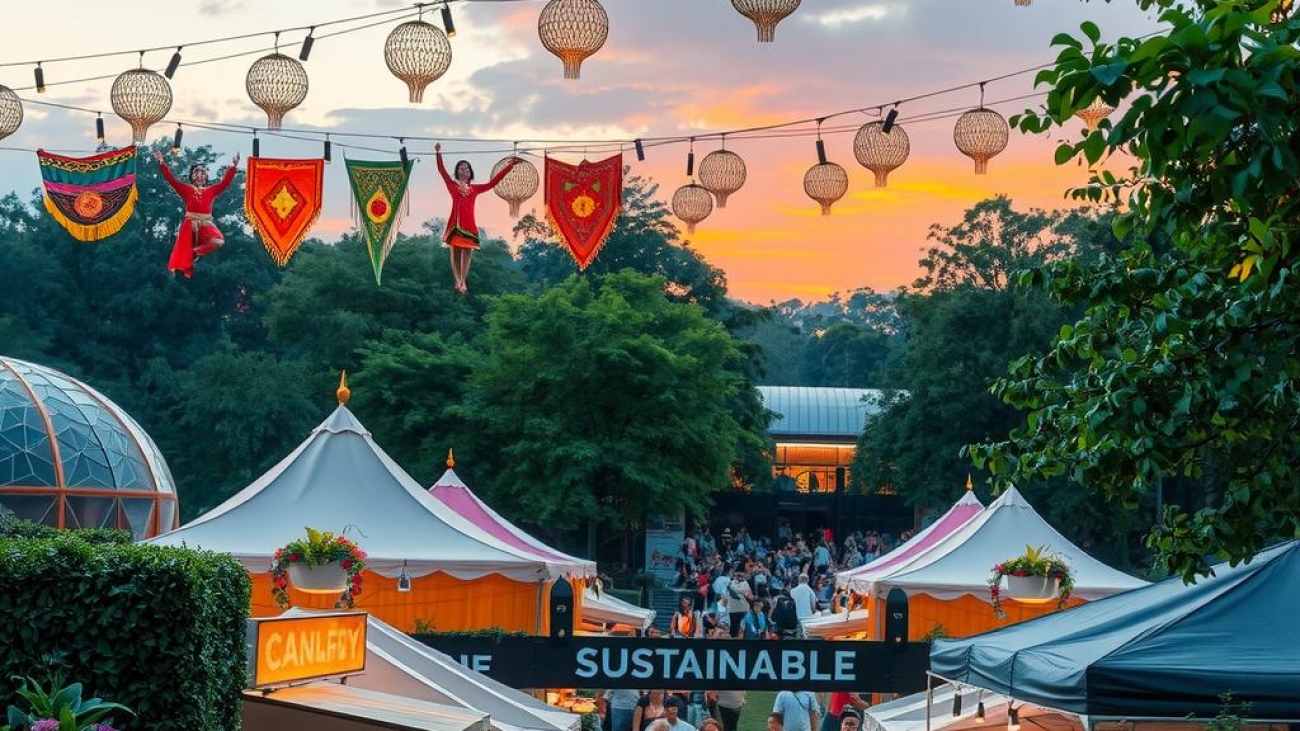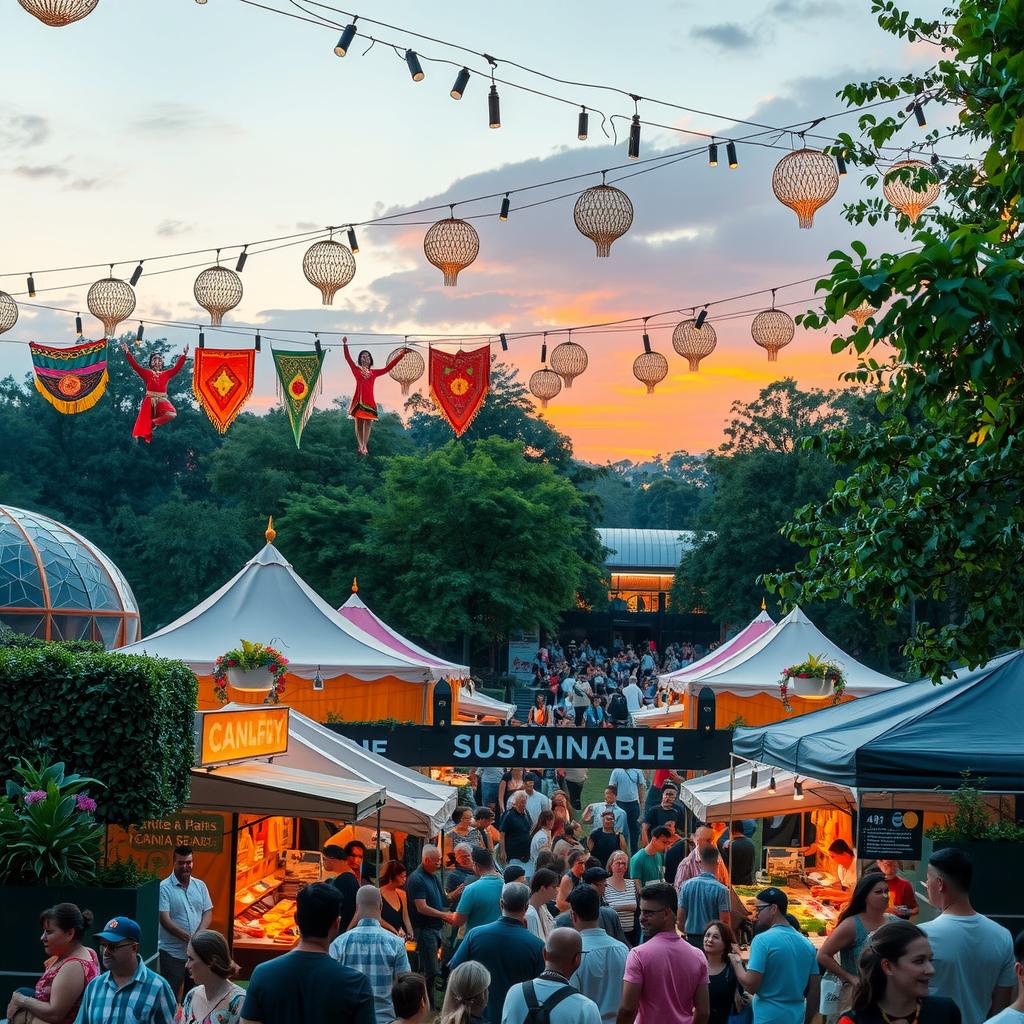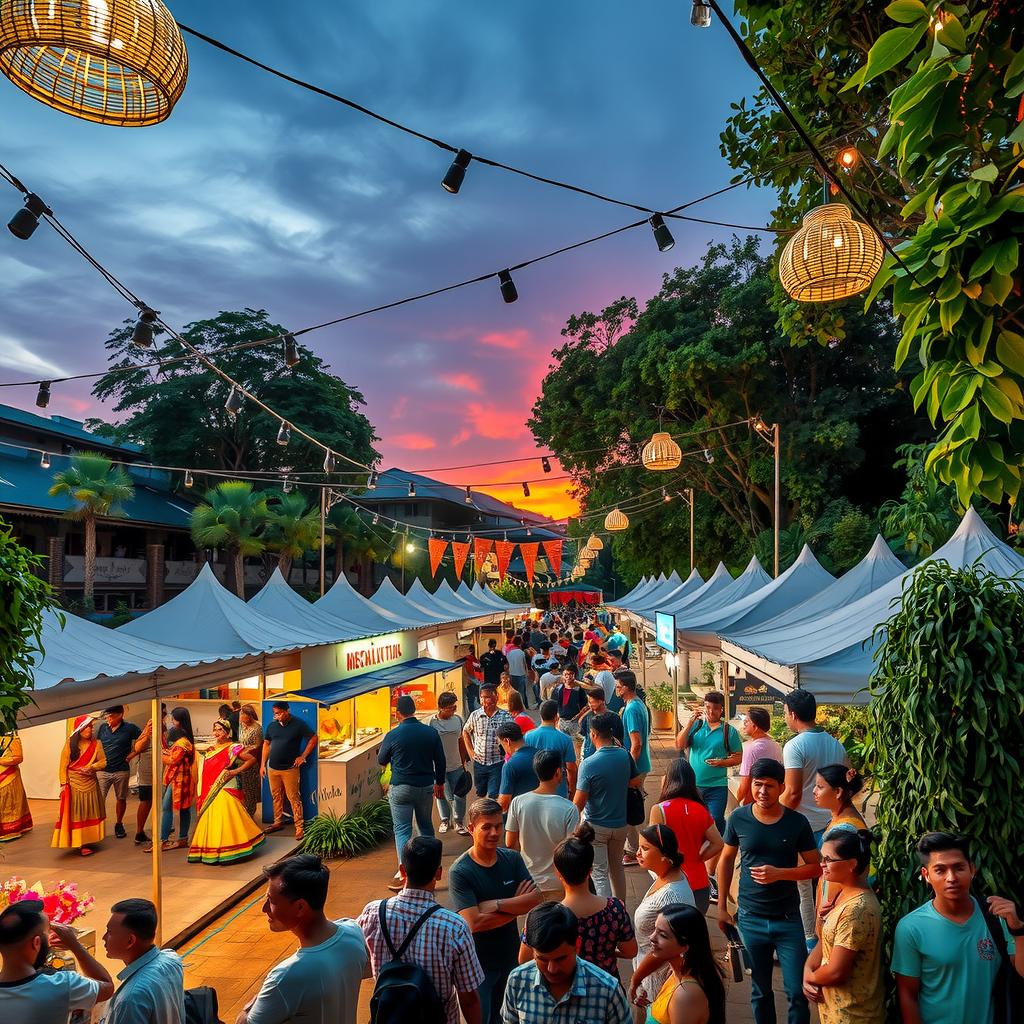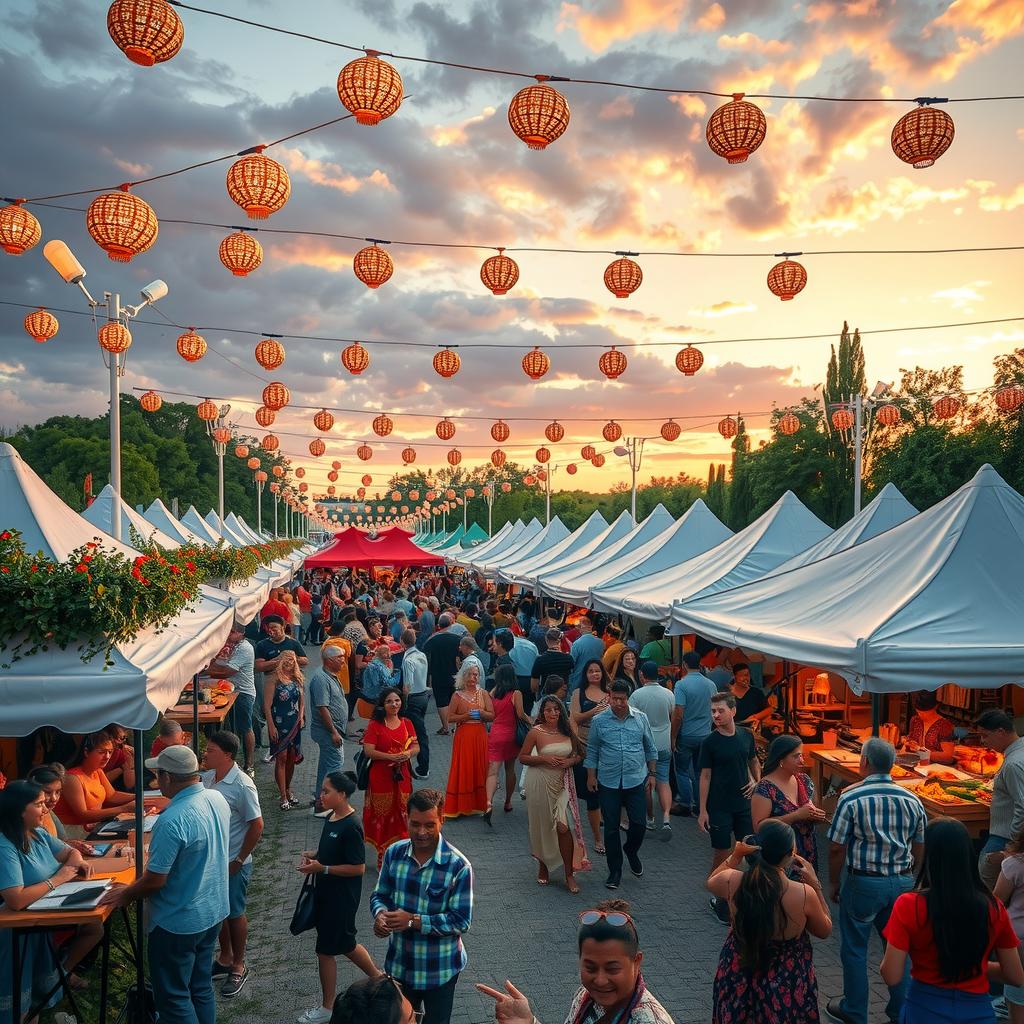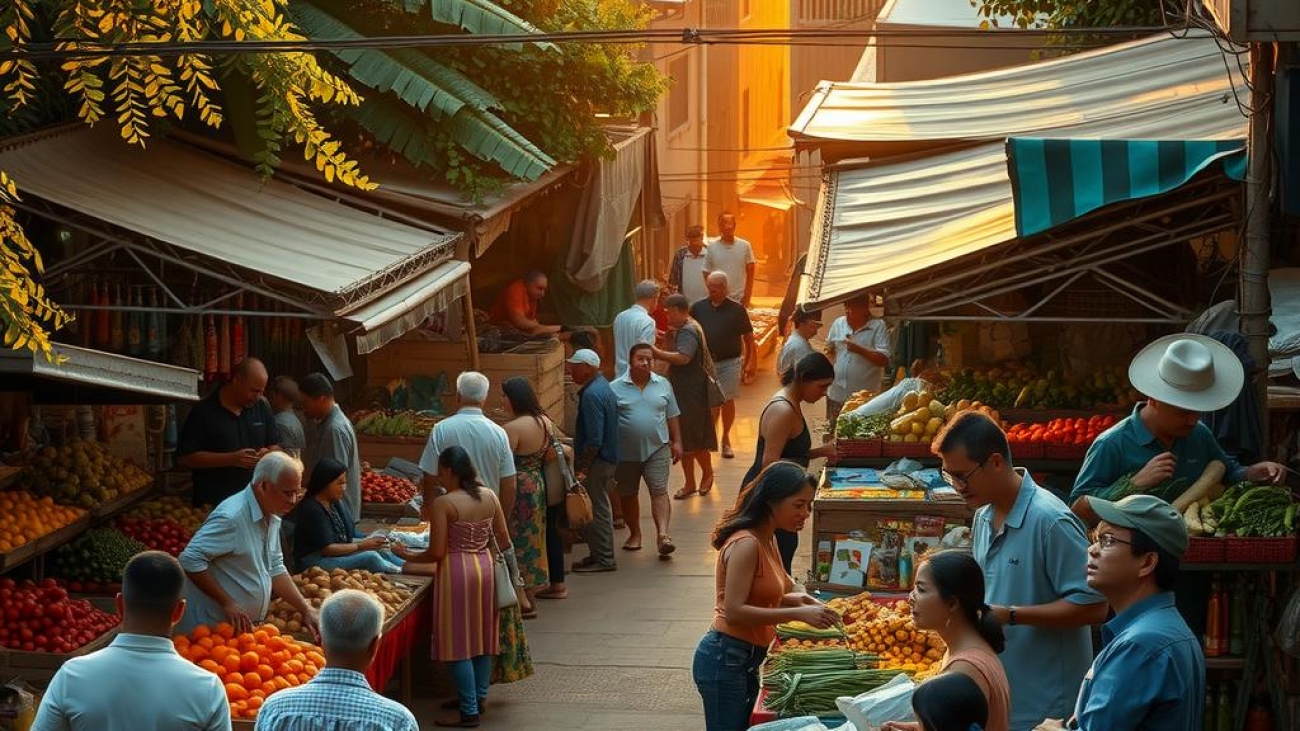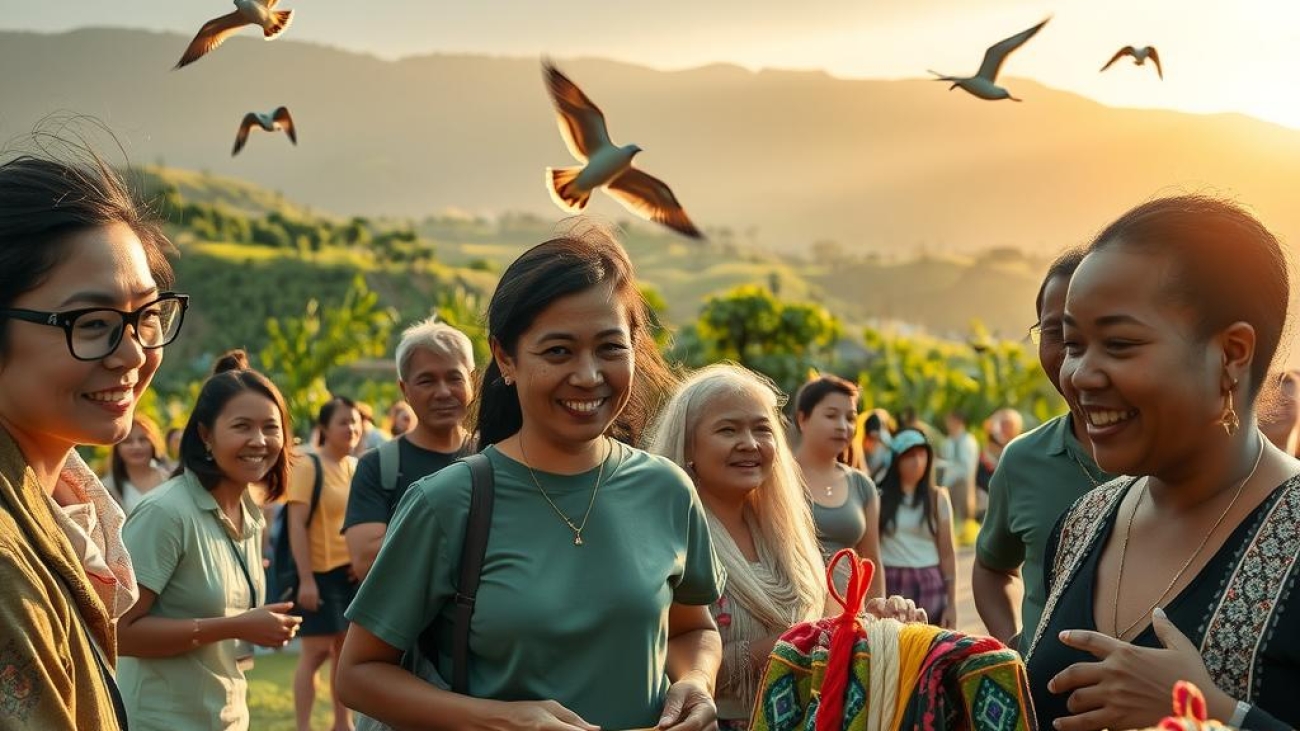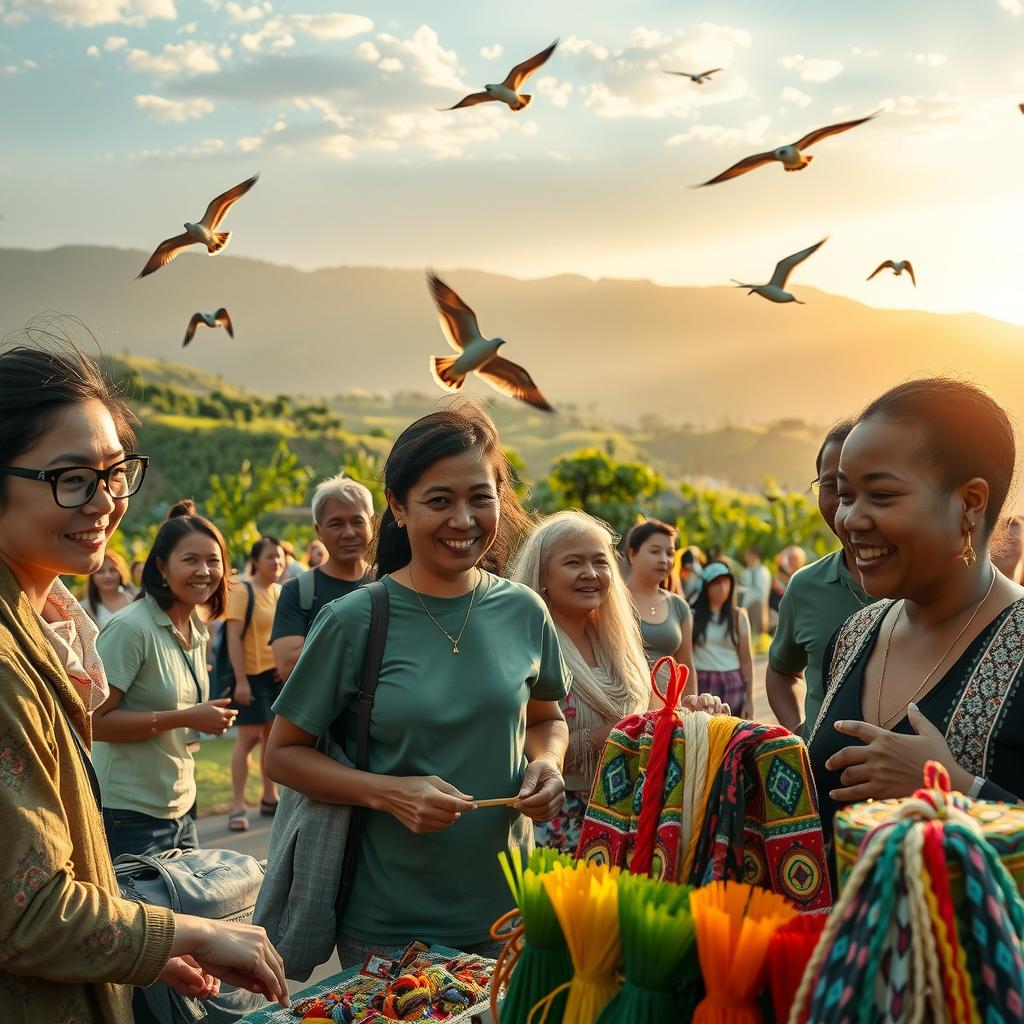Exploring the Intersection of Local Culture and Sustainability
As the world becomes increasingly globalized, preserving local culture and promoting sustainable practices have emerged as crucial priorities. Sustainable tourism and cultural exchange have become important avenues for communities to showcase their unique heritage while fostering environmental and economic sustainability. In this article, we will delve into the intricate relationship between local culture and sustainability, exploring how these concepts intersect and the various ways communities are embracing this symbiotic relationship.
At the heart of this discussion lies the importance of traditional activities and community projects that celebrate and preserve cultural heritage. From handicrafts to traditional foodways, local communities are finding innovative ways to showcase their rich histories and unique identities, while also ensuring the long-term viability of these practices. By embracing sustainable approaches, these communities are not only safeguarding their cultural heritage but also contributing to the economic sustainability of the region.
The rise of sustainable tourism has played a significant role in this endeavor, providing a platform for travelers to immerse themselves in the local culture and support the preservation of traditional ways of life. Through sightseeing and cultural exchange, visitors can gain a deeper understanding and appreciation for the diverse cultural heritage that exists within these communities. This mutual understanding and appreciation can foster a sense of shared responsibility for the environment and the preservation of local culture.
Moreover, the emphasis on sustainability extends beyond the tourism industry, as communities are increasingly investing in community projects that promote economic sustainability and social well-being. These initiatives, ranging from cooperative enterprises to artisanal workshops, not only preserve traditional activities but also empower local residents to take an active role in shaping the future of their communities.
By exploring the nexus of local culture and sustainability, we can gain valuable insights into the ways in which communities are adapting to the challenges of the modern world while remaining true to their roots. This understanding can inspire us to find innovative solutions that balance the preservation of cultural heritage with the pursuit of a more sustainable and equitable future.
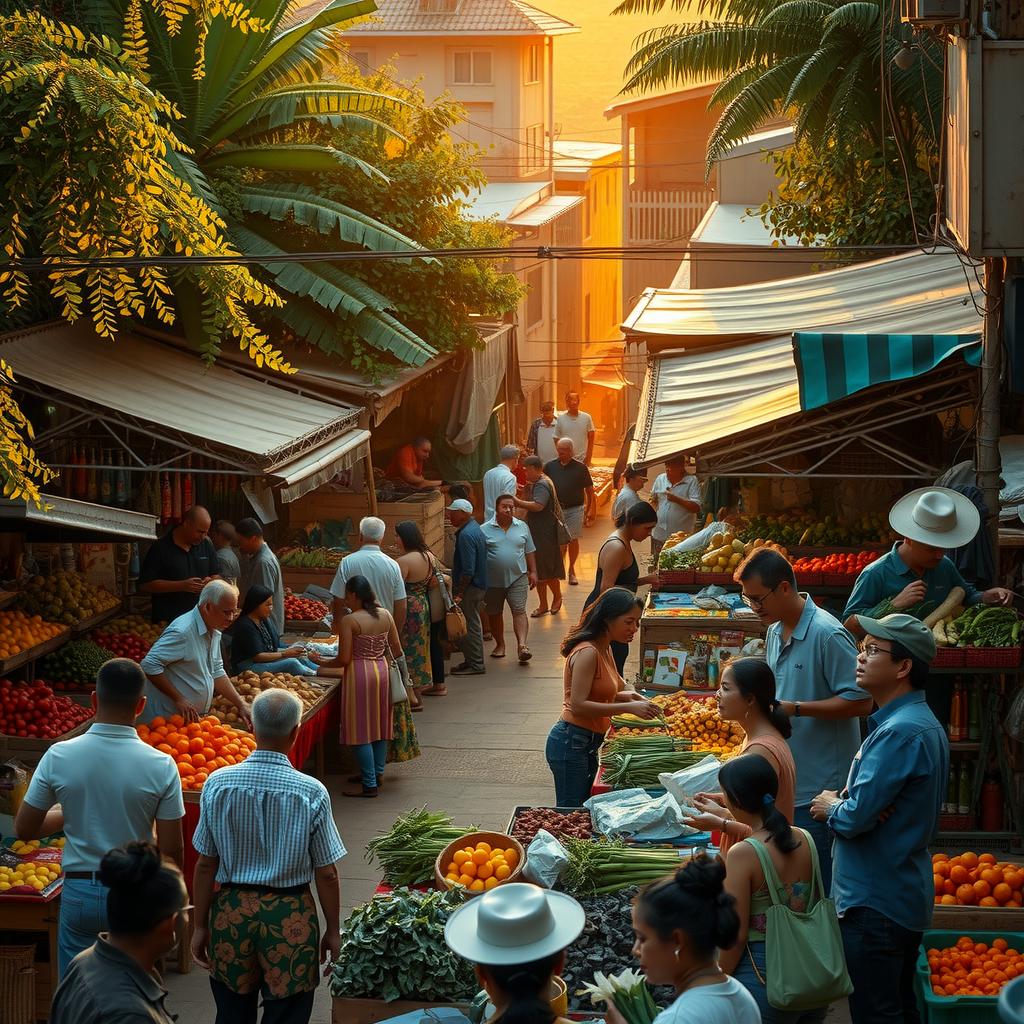
Key Points:
- Preserving Heritage, Nurturing Sustainability: Embracing local culture is crucial for a sustainable future, as it allows communities to preserve their rich cultural heritage while adopting eco-friendly practices that safeguard the environment.
- Sustainable Living Rooted in Local Traditions: By drawing inspiration from the time-honored customs and traditional lifestyles of local communities, individuals and households can discover sustainable solutions that are deeply rooted in their cultural identity.
- Blending Local Culture and Environmental Stewardship: The harmonious integration of local cultural elements and environmental conservation efforts can pave the way for a more balanced and holistic approach to sustainability, benefiting both the community and the natural world.
- Discovering Sustainable Solutions in Local Wisdom: Local communities often possess a wealth of traditional knowledge and practices that hold the key to sustainable living. Tapping into this rich repository of local wisdom can unlock innovative solutions for a sustainable future.
- Local Charm, Global Impact: Celebrating Sustainable Cultures: Embracing and showcasing the sustainable aspects of local cultures can have a ripple effect, inspiring broader adoption of sustainable practices and promoting cultural exchange on a global scale.
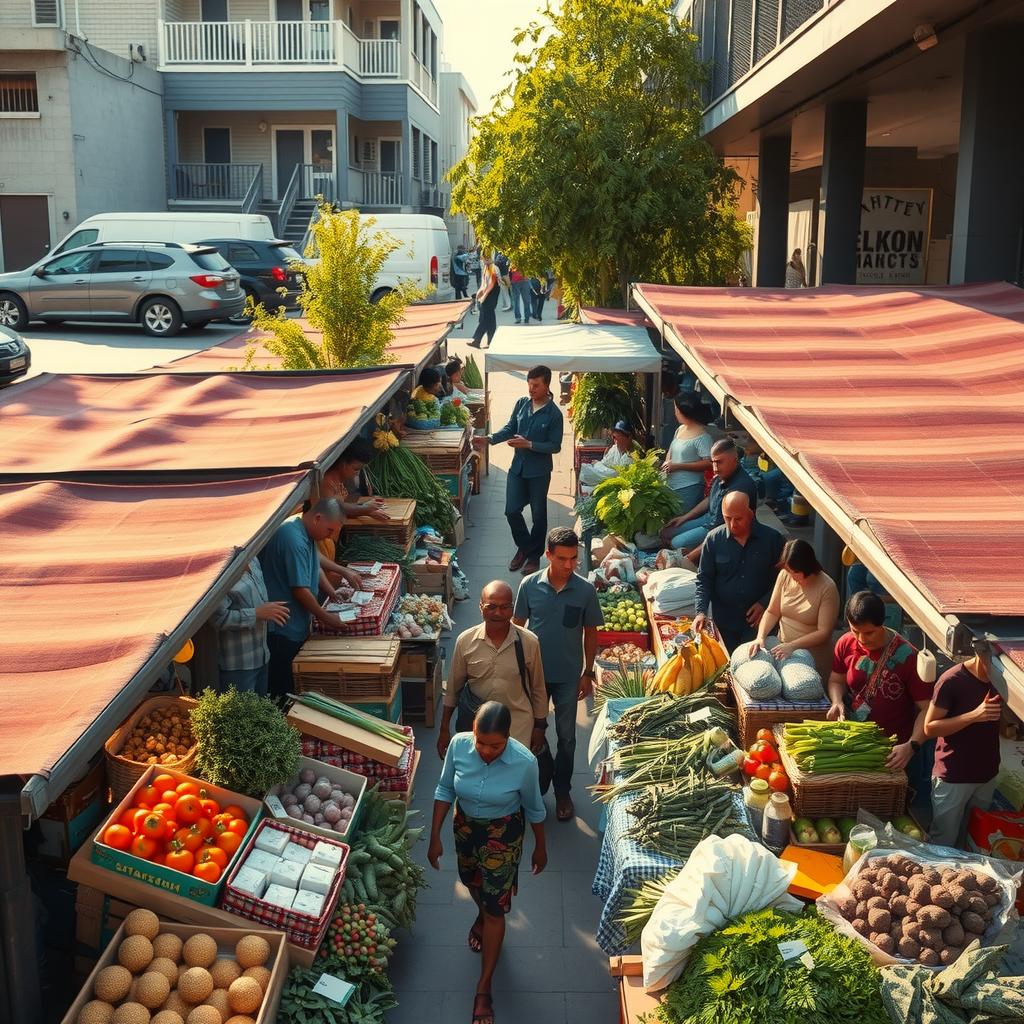
Embracing Local Culture for a Sustainable Future
Preserving Heritage
The rich tapestry of local cultures around the world is an invaluable asset in our pursuit of a sustainable future. In this article, we will explore how embracing and preserving these cultural traditions can pave the way for a more environmentally-conscious and socially-responsible global community.
One of the key aspects of preserving local culture is the safeguarding of cultural heritage. This includes the tangible elements, such as historical buildings, artifacts, and monuments, as well as the intangible elements, such as traditional practices, rituals, and knowledge systems. By actively engaging with and maintaining these cultural resources, we not only honor the legacy of past generations but also inspire a deeper sense of community pride and identity.
The sustainable tourism model offers a promising avenue for preserving cultural heritage while also generating economic benefits for local communities. By encouraging visitors to immerse themselves in the unique customs and traditions of a region, sustainable tourism initiatives can provide a sustainable source of income for residents while also fostering a greater appreciation for the value of cultural preservation. This can lead to the revitalization of traditional handicrafts, the maintenance of historic sites, and the continued practice of time-honored rituals and festivals.
Fostering Cultural Exchange
In addition to preserving cultural heritage, embracing local culture can also facilitate meaningful cultural exchange between diverse communities. When people from different backgrounds engage in open and respectful dialogue, they have the opportunity to learn from one another, challenge their own assumptions, and develop a deeper understanding of the world around them.
Local culture is often deeply intertwined with the natural environment, and by learning about traditional land management practices, sustainable agricultural techniques, and indigenous stewardship of natural resources, visitors can gain valuable insights into more environmentally-conscious ways of living. This exchange of knowledge and perspectives can inspire innovative solutions to pressing global challenges, such as climate change and resource depletion.
Furthermore, the celebration of traditional activities and community projects can serve as a powerful catalyst for social cohesion and cross-cultural collaboration. By participating in local festivals, artisanal workshops, or community-led initiatives, visitors can forge meaningful connections with residents and contribute to the preservation and evolution of these cultural practices.
Driving Economic Sustainability
The preservation and promotion of local culture can also play a crucial role in economic sustainability for communities around the world. By supporting the production and sale of handicrafts, engaging in cultural heritage tourism, and investing in sightseeing experiences that showcase the unique character of a region, local economies can thrive in a manner that is more equitable and environmentally-responsible.
When local communities are empowered to share their cultural traditions with the world, they are able to generate sustainable income streams that are not dependent on the exploitation of natural resources or the degradation of the local environment. This, in turn, can lead to greater economic sustainability and improved quality of life for residents, as well as a stronger sense of cultural pride and identity.
Fostering Community Resilience
Beyond the economic benefits, embracing local culture can also contribute to the community resilience of a region. When people feel a deep connection to their cultural heritage and the land they inhabit, they are more likely to engage in collective efforts to protect and sustain their way of life.
This sense of community ownership and stewardship can manifest in a variety of ways, from the establishment of community projects that promote sustainable resource management to the revitalization of traditional handicrafts and artisanal practices. By empowering local communities to take an active role in shaping their own futures, we can foster a more resilient and adaptive global society, better equipped to face the complex challenges of the 21st century.
Cultivating a Sustainable Future
In conclusion, the preservation and celebration of local culture are essential elements in our pursuit of a more sustainable future. By embracing the rich diversity of cultural traditions around the world, we can unlock a wealth of knowledge, innovation, and community resilience that will be crucial in addressing the pressing environmental and social challenges of our time.
As we strive to create a more equitable and environmentally-conscious global community, let us remember the invaluable role that local culture can play in guiding us towards a sustainable path forward. Through the fostering of cultural exchange, the promotion of economic sustainability, and the cultivation of community resilience, we can empower local communities to become active agents of positive change, shaping a future that is truly reflective of the vibrant and diverse world we call home.
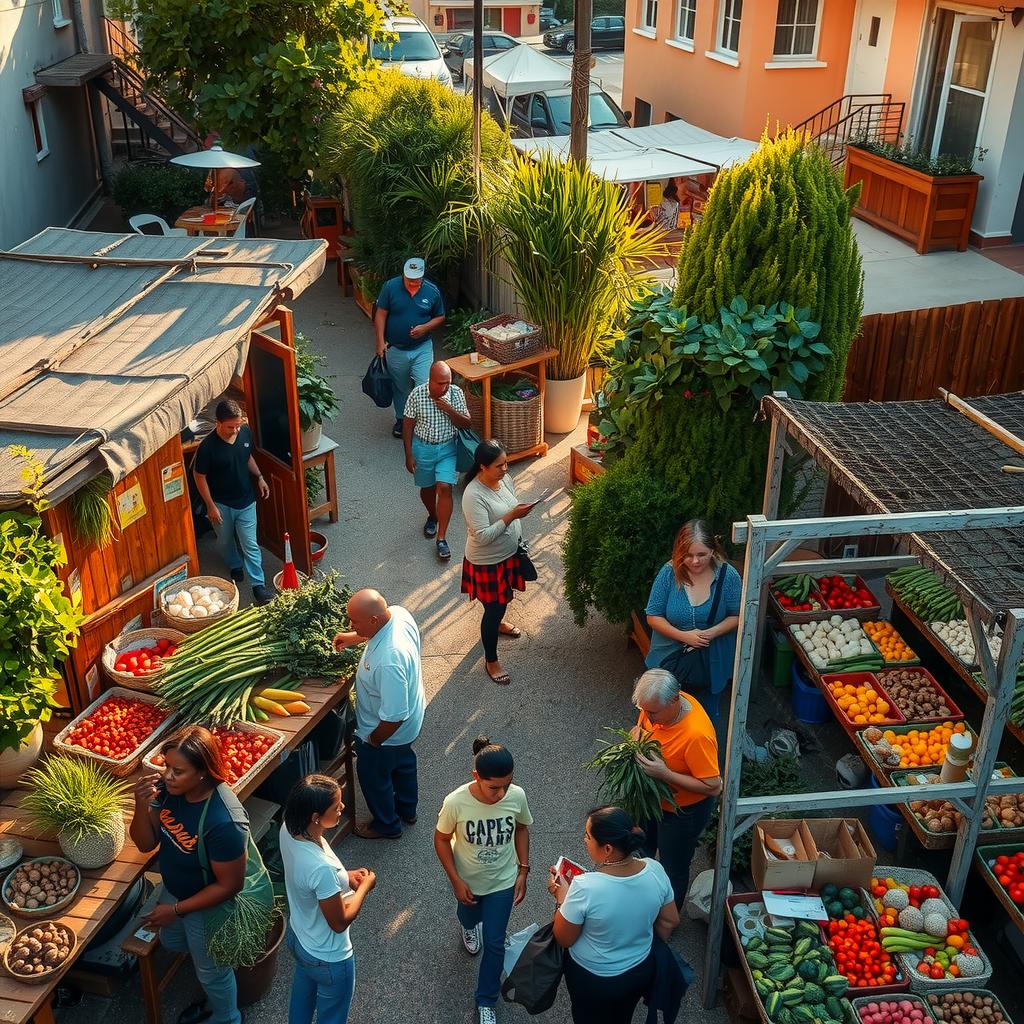
Nurturing Sustainability – Exploring how sustainable tourism can protect and promote local cultural traditions
Preserving the Essence of Local Cultures
Sustainable tourism has emerged as a transformative approach that not only promotes environmental conservation but also safeguards the rich tapestry of local cultural traditions. In this context, understanding how sustainable tourism can protect and promote local cultural heritage is of paramount importance.
Sustainable tourism emphasizes the responsible and respectful interaction between visitors and host communities, ensuring that the cultural integrity of the destination is maintained. By fostering this delicate balance, sustainable tourism can become a powerful tool in preserving the essence of local cultures. Through thoughtful planning and implementation, sustainable tourism can provide economic opportunities for communities while simultaneously preserving their traditional practices, crafts, and ways of life.
One key aspect of sustainable tourism is the promotion of cultural exchange. By encouraging genuine interactions between travelers and local communities, sustainable tourism can facilitate a mutual understanding and appreciation of cultural differences. This exchange not only enriches the travel experience but also empowers local people to take pride in and share their cultural heritage.
Empowering Local Communities through Sustainable Tourism
Sustainable tourism can also play a crucial role in empowering local communities and promoting economic sustainability. By prioritizing the involvement of local stakeholders in the tourism industry, sustainable tourism models can create employment opportunities, support traditional economic activities, and foster the development of community-based projects.
For instance, sustainable tourism initiatives may encourage the revival and showcasing of traditional handicrafts, music, and dance performances. This not only preserves the cultural heritage but also generates income for local artisans and performers, contributing to the overall economic well-being of the community.
Moreover, sustainable tourism can promote the development of community-based ecotourism projects, where local residents actively participate in the management and operation of tourism activities. These projects not only provide economic benefits but also instill a sense of ownership and pride within the community, ensuring the long-term sustainability of cultural traditions.
Protecting Cultural Heritage through Sustainable Sightseeing
Sustainable tourism also emphasizes the importance of protecting cultural heritage sites and promoting responsible sightseeing practices. By implementing guidelines and regulations that limit the impact of tourism on fragile cultural landmarks, sustainable tourism can safeguard these invaluable assets for future generations.
Furthermore, sustainable tourism encourages the development of educational programs and interpretive materials that enhance visitors’ understanding and appreciation of local cultural heritage. This fosters a deeper connection between travelers and the destination, inspiring them to become stewards of cultural preservation.
In conclusion, the intersection of sustainable tourism and local cultural traditions is a delicate yet crucial balance that can have far-reaching implications. By embracing the principles of sustainable tourism, communities can protect and promote their rich cultural heritage, empowering local stakeholders and fostering a deeper appreciation for the diversity of human cultures.
Customs and Cultural Exchange
The Importance of Preserving Local Traditions
Customs play a vital role in shaping the identity and cultural heritage of communities around the world. They serve as a tangible link to the past, reflecting the unique traditions, beliefs, and values that have been passed down through generations. In the context of sustainable tourism and cultural exchange, understanding and preserving local customs is essential for fostering a deeper appreciation and respect for diverse cultural practices.
When travelers engage with local customs, they have the opportunity to immerse themselves in the authentic experiences that define a destination. This cultural exchange can be transformative, broadening perspectives, challenging preconceptions, and creating lasting connections between visitors and host communities. By actively participating in traditional activities, such as handicraft workshops or community projects, travelers gain a deeper understanding of the intricate relationship between local culture and sustainable development.
Preserving local customs is not only important for the cultural heritage of a community but also for its economic sustainability. Many traditional activities, such as the production of handcrafted goods or the performance of cultural rituals, serve as important sources of income for local artisans and performers. Sustainable tourism initiatives that highlight and support these traditional practices can help to ensure the viability of cultural heritage while providing economic opportunities for community members.
Furthermore, the preservation of local customs is essential for maintaining the unique character and authenticity of a destination. As global influences continue to shape the modern world, it becomes increasingly important to safeguard the traditional practices that give a place its distinctive identity. By embracing and celebrating local customs, communities can ensure that their cultural heritage remains an integral part of the sightseeing experience for visitors, fostering a deeper appreciation for the rich diversity of human expression.
In conclusion, the preservation of local customs is a cornerstone of sustainable tourism and cultural exchange. By actively engaging with traditional practices, travelers can gain a deeper understanding and respect for the unique cultural identities that define communities around the world. Through this exchange, local communities can also benefit from the economic opportunities and cultural preservation that sustainable tourism can provide, ensuring the long-term viability of their customs and traditions.
Local Culture and Sustainability
Preserving Heritage, Shaping a Sustainable Future
The preservation of local culture and heritage is a crucial step in creating a more sustainable future. As communities around the world grapple with the challenges of rapid globalization and environmental degradation, the need to safeguard and celebrate their unique cultural identities has become increasingly important. By embracing the richness of local traditions, customs, and practices, we can not only protect the invaluable legacies of the past but also lay the foundation for a more resilient and sustainable tomorrow.
One of the key ways in which local culture can contribute to sustainability is through the promotion of sustainable tourism. When travelers are given the opportunity to immerse themselves in the traditions and ways of life of a particular community, they gain a deeper appreciation for the local heritage and the importance of preserving it. This, in turn, can inspire them to make more eco-conscious choices during their travels, such as supporting local businesses, participating in cultural exchange programs, and engaging in low-impact sightseeing activities.
Moreover, the preservation of local culture can also lead to the preservation of traditional practices and activities that are inherently sustainable. For example, many indigenous communities around the world have long-standing traditions of sustainable agriculture, resource management, and craft-making that are rooted in a deep respect for the natural environment. By maintaining and revitalizing these practices, communities can not only safeguard their cultural heritage but also contribute to the overall sustainability of their local ecosystems.
In addition to promoting sustainable tourism and preserving traditional practices, the preservation of local culture can also have significant economic benefits for communities. By supporting local artisans, entrepreneurs, and small businesses that specialize in the production of traditional handicrafts, textiles, and other cultural products, communities can create sustainable sources of income and employment, while also fostering a sense of pride and belonging among their residents.
Furthermore, the preservation of cultural heritage can also play a crucial role in building resilient and cohesive communities. When people are able to connect with their roots and share their cultural traditions with others, they develop a stronger sense of identity and belonging, which can help to foster social cohesion and community engagement. This, in turn, can lead to the development of innovative community-based projects and initiatives that address local sustainability challenges and create lasting positive change.
In conclusion, the preservation of local culture and heritage is not only a means of honoring the past but also a crucial strategy for shaping a more sustainable future. By embracing the richness and diversity of local traditions, customs, and practices, communities around the world can work towards creating a more resilient, equitable, and environmentally-conscious world, one that celebrates the unique cultural identities that make our global community so vibrant and diverse.
Blending Local Culture and Environmental Stewardship
Engaging with Local Communities for a Sustainable Travel Experience
Sustainable tourism has emerged as a driving force in the travel industry, offering travelers a unique opportunity to immerse themselves in the rich tapestry of local cultures while contributing to the preservation of the environment. By fostering a deep connection between tourists and host communities, this approach to travel not only enriches the visitor’s experience but also supports the economic and cultural sustainability of the destinations.
At the heart of sustainable tourism lies the principle of cultural exchange. Travelers are encouraged to engage with local communities, learn about their traditions, and participate in activities that showcase the vibrant heritage of the region. This can take many forms, from exploring traditional handicrafts and artisanal workshops to partaking in cultural festivals and community-led projects. By immersing themselves in these experiences, tourists gain a newfound appreciation for the unique identity and cultural heritage of the places they visit.
Beyond the cultural aspect, sustainable tourism also emphasizes the importance of environmental stewardship. Travelers are invited to embrace a mindful approach to their activities, minimizing their ecological footprint and contributing to the preservation of the natural landscapes. This may involve supporting local conservation efforts, participating in eco-friendly sightseeing, or engaging in community-based sustainability initiatives. By aligning their travel choices with sustainable practices, tourists can actively contribute to the long-term well-being of the destinations they explore.
The benefits of this approach to tourism extend beyond the individual traveler. Local communities can leverage sustainable tourism to enhance their economic sustainability, providing opportunities for small businesses, artisans, and community-based enterprises to thrive. Traditional activities and handicrafts can be showcased, allowing visitors to directly support the livelihoods of the people who preserve these cultural treasures.
Furthermore, sustainable tourism fosters a deeper understanding and appreciation for the nuances of local culture. Travelers are encouraged to approach their experiences with cultural sensitivity and a willingness to learn, fostering meaningful cultural exchanges that transcend the boundaries of the typical tourist-host relationship. This mutual understanding can lead to lasting connections and a shared commitment to the preservation of cultural heritage.
By embracing the principles of sustainable tourism, travelers can embark on a journey that not only satisfies their desire for authentic experiences but also contributes to the environmental and cultural sustainability of the destinations they visit. Through this symbiotic relationship between visitors and host communities, the world can become a more interconnected and resilient place, where the beauty and diversity of local cultures are celebrated and protected for generations to come.
Supporting Community-Based Projects
Empowering Local Initiatives
Community-based projects play a vital role in fostering sustainable development and preserving local culture. These grassroots initiatives often arise from the unique needs and aspirations of a community, reflecting the intricate tapestry of its identity. By supporting such projects, we have the opportunity to amplify the voices of local stakeholders, harness their collective wisdom, and catalyze positive changes that resonate with the community’s values and priorities.
One key aspect of supporting community-based projects is recognizing the inherent strengths and capabilities of the local population. These projects are frequently spearheaded by individuals or groups who possess a deep understanding of their community’s challenges and an unwavering commitment to finding solutions. By providing resources, technical assistance, and a platform for their ideas, we can empower these community champions to bring their visions to life, fostering a sense of ownership and fostering long-term sustainability.
Furthermore, community-based projects often serve as a conduit for preserving and celebrating local cultural heritage. From traditional handicrafts and artisanal practices to indigenous knowledge and rituals, these initiatives help to safeguard the tangible and intangible elements that define a community’s identity. By investing in these projects, we can not only support economic opportunities for local artisans and entrepreneurs but also ensure the continued transmission of cultural traditions to future generations.
In the realm of sustainable tourism, community-based projects offer an authentic and immersive experience for visitors, allowing them to engage with local communities in a meaningful way. These initiatives often provide opportunities for cultural exchange, enabling travelers to gain a deeper understanding of the host community’s way of life, traditions, and values. This exchange can foster mutual respect, challenge stereotypes, and cultivate a shared sense of global citizenship.
Fostering Inclusive Development
Community-based projects also play a crucial role in promoting inclusive development, ensuring that the benefits of progress are equitably distributed among all members of a community. By empowering marginalized groups, such as women, youth, and Indigenous populations, these initiatives can address social inequities and create pathways for greater economic, social, and political participation.
Moreover, community-based projects often serve as catalysts for local economic sustainability, generating employment opportunities, diversifying income streams, and supporting the development of small and medium-sized enterprises. This grassroots approach to economic development can strengthen community resilience, reduce poverty, and foster a more equitable distribution of resources.
In conclusion, supporting community-based projects is a transformative strategy that can unlock the vast potential of local communities. By recognizing and nurturing the ingenuity, cultural wealth, and collective aspirations of these grassroots initiatives, we can foster sustainable development, preserve cultural heritage, and promote inclusive progress that resonates with the unique needs and identities of diverse communities around the world.
Local Culture and Sustainability
Fostering Environmental and Cultural Preservation
In a world increasingly dominated by globalization and mass-produced goods, the importance of preserving local cultures and traditions has become more vital than ever. One way travelers can contribute to this noble cause is by purchasing local handicrafts, which not only supports the artisans and craftspeople behind these unique creations but also fosters environmental and cultural sustainability.
When we choose to acquire locally-made handicrafts, we are not merely obtaining a physical product; we are investing in the preservation of centuries-old techniques, passed down from generation to generation. These intricate artworks often reflect the very essence of a community’s heritage, serving as tangible links to its rich history and traditions. By supporting these local artists and their work, we actively participate in sustaining the cultural diversity that makes our world so remarkably vibrant and fascinating.
Moreover, the production of many traditional handicrafts utilizes sustainable and eco-friendly materials and methods. Artisans often rely on natural resources, such as locally-sourced fibers, dyes, and wood, which minimizes the environmental impact of their creations. In contrast to mass-produced goods that frequently contribute to resource depletion and pollution, the handcrafted nature of these local products aligns with the principles of environmental sustainability.
Enriching Cultural Exchanges and Community Empowerment
When travelers make the conscious choice to purchase local handicrafts, they not only acquire unique and authentic mementos but also engage in meaningful cultural exchanges. These interactions provide opportunities to learn about the stories, techniques, and traditions that imbue each piece with its distinct character. By fostering deeper connections with the local communities, travelers can gain a more profound understanding and appreciation for the cultural heritage that shapes the very fabric of a destination.
Community-based tourism initiatives that promote the sale of local handicrafts often serve as powerful drivers of economic sustainability for marginalized populations. The income generated from these artisanal activities can provide crucial support for families, fund community development projects, and empower local artisans, particularly women, to become self-sufficient and financially independent. This, in turn, strengthens the resilience of these communities, enabling them to preserve their traditional ways of life and pass them on to future generations.
Immersing in the Richness of Local Traditions
Engaging with local handicrafts also presents an unparalleled opportunity for travelers to immerse themselves in the richness of local traditions. From the intricate weaving techniques of indigenous weavers to the delicate brush strokes of traditional painters, each handcrafted item tells a story that reflects the unique cultural identity of its place of origin. By exploring these artisanal works, travelers can gain a deeper appreciation for the creativity, skill, and pride that local artisans pour into their creations.
Furthermore, the purchase of local handicrafts can serve as a meaningful investment in the preservation of cultural heritage. As these artisanal products continue to be in demand, the incentive for communities to maintain their traditional practices and pass them on to future generations is strengthened. This, in turn, ensures that the vibrant tapestry of local cultures remains intact, enriching the experiences of both residents and visitors alike.
Local Charm
Discovering the Heart of a Community
In the bustling world of globalization, it can be easy to overlook the unique charm and character of local communities. However, those who take the time to explore the nooks and crannies of a place often find themselves captivated by the rich tapestry of local culture, traditions, and ways of life. This is the essence of “local charm” – the inviting allure of a community that has preserved its distinct identity and authenticity, offering visitors a glimpse into a world that is both familiar and foreign.
One of the primary draws of local charm is the opportunity to immerse oneself in the daily rhythms and routines of a community. By engaging with local residents, visitors can gain a deeper understanding of the values, beliefs, and customs that shape the community’s identity. This might involve participating in traditional festivals and celebrations, learning about the history and heritage of the region, or simply observing the interactions and dynamics of the local people.
Another aspect of local charm is the chance to discover unique products and craftsmanship. Many communities take pride in their artisanal traditions, whether it’s the delicate handwoven textiles of a mountain village or the intricate woodcarvings of a coastal town. By supporting these local artisans and purchasing their creations, visitors not only acquire a tangible piece of the community but also contribute to the economic sustainability of the region.
Furthermore, local charm often encompasses the natural beauty and environmental stewardship of a place. Communities that have maintained a close connection to their natural surroundings often prioritize sustainable practices, such as eco-tourism initiatives, community-led conservation efforts, and the preservation of local habitats and ecosystems. By engaging with these initiatives, visitors can not only enjoy the breathtaking landscapes but also gain a deeper appreciation for the delicate balance between human activities and the natural world.
In essence, local charm is a multifaceted concept that encompasses the cultural, economic, and environmental aspects of a community. It is a celebration of the unique identity and traditions that make a place truly special, offering visitors a chance to step away from the homogenized global landscape and immerse themselves in the rich tapestry of local life.
The Art of Sustainable Tourism
As the world becomes increasingly interconnected, the concept of sustainable tourism has gained significant prominence. Sustainable tourism is not just about minimizing the environmental impact of travel; it also encompasses the preservation of local cultures, the support of community-based initiatives, and the fostering of meaningful cultural exchanges.
At the heart of sustainable tourism lies the principle of respecting and celebrating the local charm of a destination. This means embracing the unique customs, traditions, and ways of life that make a community distinct, and engaging with them in a manner that supports and strengthens the local economy and social fabric.
One of the key aspects of sustainable tourism is the promotion of community-based projects and initiatives. By partnering with local organizations and businesses, visitors can gain a deeper understanding of the community’s needs and challenges, and contribute to the development of sustainable solutions. This might involve supporting local artisans, participating in community-led conservation efforts, or engaging in cultural exchange programs that foster mutual understanding and respect.
Moreover, sustainable tourism encourages visitors to immerse themselves in the local way of life, rather than simply passing through as passive observers. This can involve staying in locally-owned accommodations, dining at family-run restaurants, or participating in traditional activities and workshops. By doing so, visitors not only enrich their own travel experience but also contribute to the economic and social well-being of the community.
Ultimately, sustainable tourism is not just about minimizing the environmental impact of travel; it is about embracing the local charm of a destination and fostering a mutually beneficial relationship between visitors and the host community. By engaging in this type of tourism, travelers can not only enjoy the unique cultural and natural offerings of a place, but also contribute to the long-term sustainability and preservation of the local way of life.
Preserving the Essence of Local Culture
In an increasingly globalized world, the preservation of local culture has become a pressing concern. As communities are exposed to a constant influx of external influences, there is a risk of losing the unique essence that defines their identity and heritage. However, through the thoughtful and respectful engagement of visitors, the preservation of local culture can be achieved, ensuring that the rich tapestry of human diversity remains vibrant and resilient.
One of the key aspects of preserving local culture is the recognition and appreciation of traditional practices and activities. From the intricate craftsmanship of artisanal products to the time-honored rituals and ceremonies that mark the
Celebrating Diverse Local Cultures for Global Sustainability
Preserving Cultural Heritage for a Greener Future
The preservation and celebration of diverse local cultures around the world can have a profound and far-reaching impact on global sustainable development. By honoring the unique traditions, customs, and ways of life of indigenous and local communities, we not only safeguard invaluable cultural heritage but also unlock pathways to a more sustainable future for all.
At the heart of this ethos lies the intrinsic connection between local cultures and environmental stewardship. Many traditional societies have long-established practices of living in harmony with their surrounding ecosystems, utilizing natural resources in a sustainable manner and deeply respecting the delicate balance of the natural world. By embracing and learning from these time-honored traditions, we can glean invaluable insights and strategies for cultivating a more eco-conscious global community.
Take, for instance, the indigenous communities of the Amazon rainforest, whose deep reverence for the land and its resources has enabled the preservation of this vital ecological treasure for generations. Through their traditional knowledge and sustainable land management practices, these communities have demonstrated the profound impact that local cultural preservation can have on global environmental conservation.
Empowering Local Economies through Cultural Tourism
Beyond the environmental benefits, the celebration of diverse local cultures can also drive economic sustainability and empower local communities. In an era of globalization, cultural tourism has emerged as a powerful tool for promoting sustainable development and income generation at the grassroots level.
When visitors from around the world are invited to immerse themselves in the unique cultural experiences of a destination, they not only enrich their own understanding of the world but also contribute to the livelihoods of the local people. From participating in traditional handicraft workshops to engaging in community-based ecotourism activities, these cultural exchange opportunities create valuable income streams and economic opportunities for indigenous and local populations.
Moreover, the development of sustainable cultural tourism initiatives often goes hand-in-hand with the preservation and revitalization of traditional art forms, music, dance, and other cultural expressions. This not only strengthens the cultural identity and pride of local communities but also fosters a deeper sense of belonging and connection to their ancestral heritage.
Fostering Intercultural Dialogue and Global Cooperation
The celebration of diverse local cultures also has the power to transcend geographical boundaries and foster meaningful intercultural dialogue and global cooperation. When people from different backgrounds come together to share their unique cultural perspectives and traditions, they gain a deeper appreciation for the richness and diversity of the human experience.
This exchange of knowledge and ideas can lead to the development of innovative solutions to global challenges, as communities learn from one another’s sustainable practices and traditional ecological wisdom. By cultivating a global mindset that values and respects cultural diversity, we can unlock new pathways for collaborative action on issues such as climate change, resource management, and social justice.
Embracing the Spirit of Global Citizenship
Ultimately, the preservation and celebration of diverse local cultures is not just about safeguarding the past, but about shaping a more sustainable and equitable future for all. By embracing the spirit of global citizenship and recognizing the inherent value of cultural diversity, we can collectively work towards a world where local communities thrive, environmental stewardship is the norm, and sustainable development is the driving force behind global progress.
Empowering Local Voices for a Sustainable Future
As we navigate the complex challenges of the 21st century, it is imperative that we listen to and amplify the voices of local communities, whose deep-rooted connections to their land and heritage can provide invaluable insights and solutions. By fostering inclusive dialogues and collaborative partnerships, we can ensure that the preservation and celebration of diverse local cultures remains at the forefront of the global sustainability agenda, paving the way for a more resilient and harmonious future for all.
Embracing Local Culture for a Sustainable Future
Preserving Heritage, Nurturing Sustainability
Sustainable tourism is about more than just sightseeing – it’s about cultivating a deep appreciation for local cultures and traditions. By participating in time-honored activities, supporting community projects, and purchasing local handicrafts, travelers can gain a meaningful understanding of the places they visit. This, in turn, helps to preserve cultural heritage and promote economic sustainability within these communities.
Sustainable Living Rooted in Local Traditions
Traditional ways of life often hold the key to sustainable living. By drawing inspiration from local customs and wisdom, we can discover innovative solutions for reducing our environmental impact and living in harmony with the natural world. Whether it’s using local materials, adopting traditional farming practices, or reviving forgotten crafts, embracing local culture can unlock the secrets to a more sustainable future.
Blending Local Culture and Environmental Stewardship
Sustainable tourism is a delicate balance of respecting local cultures and safeguarding the environment. When done right, it can lead to a mutually beneficial relationship between travelers, communities, and the natural world. By supporting community-led initiatives, purchasing eco-friendly products, and engaging in cultural exchange, visitors can play a vital role in preserving both local heritage and the surrounding ecosystems.
Discovering Sustainable Solutions in Local Wisdom
Indigenous communities around the world have long-practiced sustainable living, harnessing the resources of their local environments in thoughtful and innovative ways. By tapping into this deep well of local knowledge and traditional practices, we can discover sustainable solutions to modern challenges, from renewable energy to waste management. Embracing local culture is key to unlocking a more sustainable future.
Local Charm, Global Impact: Celebrating Sustainable Cultures
In a world increasingly homogenized by globalization, the preservation of local cultures is more important than ever. By celebrating the unique traditions, crafts, and ways of life found in communities around the globe, we can foster a greater appreciation for cultural diversity and sustainable living. When travelers engage with local cultures, they not only enrich their own experiences but also contribute to the long-term viability of these precious traditions.
FAQ:
Q: How can travelers support local cultures while engaging in sustainable tourism?
A: Travelers can support local cultures and promote sustainability by participating in traditional activities, purchasing locally-made handicrafts, and supporting community-led initiatives. This helps to preserve cultural heritage and foster economic sustainability within the visited communities.
Q: What can we learn from traditional ways of life when it comes to sustainable living?
A: Traditional cultures often hold the key to sustainable living, offering innovative solutions for reducing environmental impact and living in harmony with nature. By drawing inspiration from local customs, wisdom, and practices, we can discover sustainable ways of life that are rooted in local traditions.
Q: How can the preservation of local cultures contribute to a more sustainable future?
A: The preservation of local cultures is crucial for a sustainable future. By celebrating the unique traditions, crafts, and ways of life found in communities around the world, we can foster greater appreciation for cultural diversity and sustainable living. When travelers engage with local cultures, they contribute to the long-term viability of these precious traditions.
Q: What is the role of community-led initiatives in sustainable tourism?
A: Community-led initiatives play a vital role in sustainable tourism, as they help to ensure that the benefits of tourism are directed back into the local community. By supporting these community-driven projects, travelers can contribute to the preservation of cultural heritage and the promotion of economic sustainability.
Q: How can local knowledge and traditional practices inform sustainable solutions for modern challenges?
A: Indigenous and local communities around the world have long-practiced sustainable living, drawing upon the resources of their local environments in thoughtful and innovative ways. By tapping into this deep well of local knowledge and traditional practices, we can discover sustainable solutions to a wide range of modern challenges, from renewable energy to waste management.





